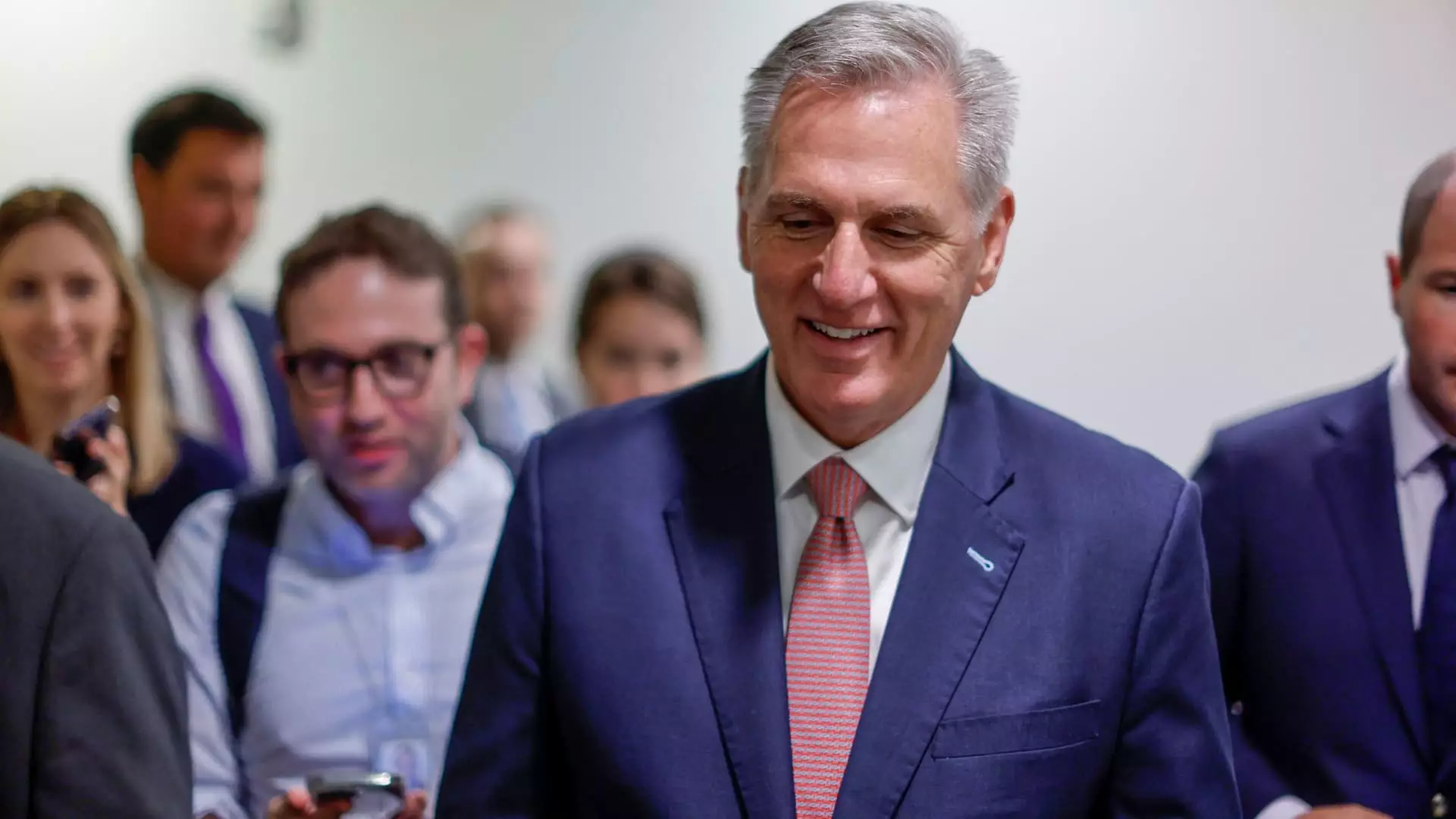The super PAC aligned with Republican House Speaker Kevin McCarthy has devised a strategy to spend at least $100 million in the 2024 election cycle to support GOP House candidates in states that were won by President Joe Biden in 2020. This strategy, known as the “Blue State Project,” aims to address the unique challenges of campaigning in blue states where swing voters have different priorities and the Republican party infrastructure is not as established as in battleground states. The Congressional Leadership Fund (CLF), the super PAC involved, believes that the House will be won or lost in these blue states, making the investment in voter outreach networks crucial for Republican success.
The Difficulty of Building Infrastructure
In blue states where one party has long been dominant, such as Democrats in California or Republicans in Wyoming, there is little motivation for top super PACs to spend money on building extensive voter outreach networks. This creates a challenge for House Republicans, who must create their own infrastructure to effectively compete in these states. Congressional Leadership Fund president Dan Conston acknowledges that these blue states exist outside the competitive presidential and Senate races, requiring Republicans to identify key voters, build a voter contact plan, and create a turnout strategy for Election Day. These elements of political campaign management are notoriously complex and expensive.
The slim majority that Republicans currently hold in the House after the 2022 midterms is largely thanks to victories in blue states like New York. However, the campaign arm for House Democrats, the Democratic Congressional Campaign Committee, has identified these flipped New York seats as targets for the 2024 election cycle. Similarly, the Democratic rival House Majority PAC plans to invest millions of dollars in New York and California. To hold these Biden-won seats in deep blue states, groups like the CLF will have to buy airtime for advertisements in some of the most expensive media markets in the country. The Cook Political Report identifies several Republican seats in New York and California as toss-up races, highlighting the importance of strategic campaigning in these regions.
Expanding the Map
Competing in blue states is not only about holding seats but also about expanding Republican control over the House. With a narrow majority, Republicans must explore opportunities to add seats in traditionally blue states. Ozzie Palomo, a co-founder of lobbying firm Chartwell Strategy Group and a Republican fundraiser, emphasizes the significance of expanding the map to secure the GOP’s control over the House. By investing in blue states, Republicans have the potential to maintain their existing seats and potentially gain additional seats, thus strengthening their position in the House.
Identifying Targeted Districts
The CLF memo provides insight into which specific districts the committee and House Republicans believe they have the best chance of success. The super PAC believes there are significant pickup opportunities in districts currently held by Representatives Elissa Slotkin in Michigan, Susan Wild in Pennsylvania, and Matt Cartwright in Pennsylvania. It is worth noting that Slotkin is also running for the Senate to replace retiring Senator Debbie Stabenow in Michigan. These targeted districts present strategic opportunities for Republicans to make gains in blue states and achieve their desired outcomes.
The challenge for Republicans in blue states lies in building their own infrastructure for successful campaigning. With swing voters in blue states having different priorities and limited Republican party infrastructure, the Congressional Leadership Fund’s investment in the “Blue State Project” becomes crucial. By identifying key voters, creating a robust voter contact plan, and executing a turnout strategy, Republicans hope to win the House in 2024. Furthermore, competing in blue states is not only about maintaining seats but also about expanding the Republican map. By investing in traditionally Democratic strongholds, Republicans have the potential to strengthen their control over the House. As the 2024 election cycle approaches, it will be interesting to see how the CLF’s strategy unfolds and whether it yields the desired results for House Republicans.


Leave a Reply